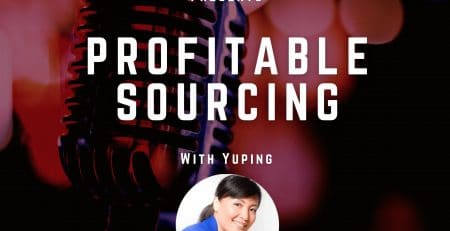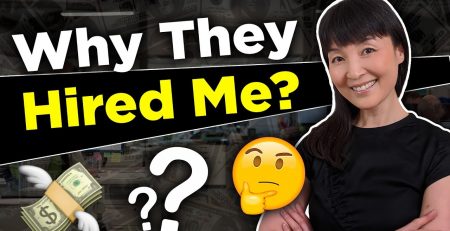You get an exciting product idea – and now you just need a supplier to manufacture your product! Thanks to all the hacks you learned in the Alibaba Sourcing Hacks video, you’ve located at least 10 direct factories. All you need now is to ask them for a quote.
Getting those quotes is one the most exciting moments in sourcing, the first concrete step in your dream becoming a reality. Before you contact your prospective suppliers, though, first consider what you’re going to say – and how you’ll say it.
I’m Yuping Wang, and I’ve been sourcing for 20 years. In this blog I’ll point out 4 mistakes that most beginners make when they send that first message to a supplier.
Mistake # 1: Acting As The Decision Maker
Whether you call yourself the owner, the CEO, the president…they mean the same thing: you’re the decision maker.
And for once, being the decision maker works against you. Let me explain.
In 20 years, I have never seen a decently-sized company – even a company of five people – in which the CEO contacts a supplier for a quote.
It sounds influential and no-nonsense to tell a supplier that you’re the CEO, but that title only has power within your own walls. The supplier, on the other hand, can immediately sense that you’re a smaller business, perhaps even a one-person operation.
You are the CEO; that’s true. But right now, you’re acting solely in a sourcing capacity. So do yourself a favor – call yourself a buyer, or a senior buyer if that sounds more appropriate.
Operating under a lower title like “buyer” helps to create the illusion of a larger company structure. And if you get stuck with your negotiations, you can always fall back on your CEO position and use that clout as negotiation leverage.
Mistake # 2: Not Asking For The Breaks – An “Any Quantity” Quote
In sourcing, it’s ill-advised to talk price without also talking quantity. Unit price should go down as quantity goes up.
The different quantities at which the price decreases are called the quantity breaks. These are the points where you get your price breaks.
Most beginners don’t know how to ask for the price break. And since they don’t ask, the supplier is happy to quote them a blanket price, which means even if order quantity increases, they still have to pay the same price per unit.
That’s one way you can leave profits on the table before you even start.
How do you ask for “Price Break” then?
You need to first set up the quantity breaks. These quantity breaks are based on your projected sales volume.
I teach students in Sourcing Warrior’s Mastermind© how to set up the quantity breaks correctly – not too low, and not too high.
For now, a good first step is to remember to ask the supplier to quote different quantities so you can gain access to the price differences.
Mistake # 3: Asking For Something Vague – An “Anything” Quote
You have an idea in your head of what your product looks like. When you ask for a quote, you need to translate that mental picture into a list of meaningful specifications.
The best way to explain this is to use an example.
Imagine you want to sell a squeeze ball. You need your supplier to give you a quote for this squeeze ball.
- Here’s the wrong way to ask: “Can you give me a quote for a squeeze ball”?
- This is better: “Can you give me a quote for a squeeze ball in this size, at this density, in this color, with this material…?”
The more specific you get with your request for quote, the more accurate the quote will come back – and the more accurately you can analyze your margins.
Additionally, a vague quote request can send the message that you either don’t know or don’t care what sort of product you’ll end up receiving. This sends the wrong message to a supplier, and opens you up to the risk of receiving inferior or inconsistent products.
If you don’t have the necessary information for a full specification, you’ll need to research. Jump onto Amazon and appraise competitor product listings for specifications. Use those for your initial quote request.Don’t ask for an “Anything” quote; ask for a quote on a specific product.
Mistake # 4: Not Specifying A Due Date – An “Anytime” Quote
Requesting a quote without specifying a due date isn’t really a huge mistake; it’s more of an indication that you’re new to sourcing.
Sourcing Agents and Sourcing Pros ask for quotes with a specific due date. Company projects have their deadlines, so supplier quotes need to have a due date.
Beyond making you look more professional as a buyer, specifying a quote due date serves 3 other purposes:
- It challenges your supplier’s attention to detail.
- It can help eliminate the middlemen. A direct manufacturer should be able to respond to your quote within your due dates, while a middleman will have to run around and find your product first.
- It helps you organize your process. You can assign a cutoff date where the quote phase ends and you can start to analyze quotes.
Final Thought
When dealing with suppliers, first impressions are money.
The key tactic is to avoid being perceived as a rookie buyer. If you sound like a rookie, you will get a rookie price.
These 4 Amazon FBA sellers mistakes are made by countless beginners, and it costs them thousands of dollars that they don’t have to spend.
[optin-monster-shortcode id=”onfotxh2e8gspjp2nco9″]












